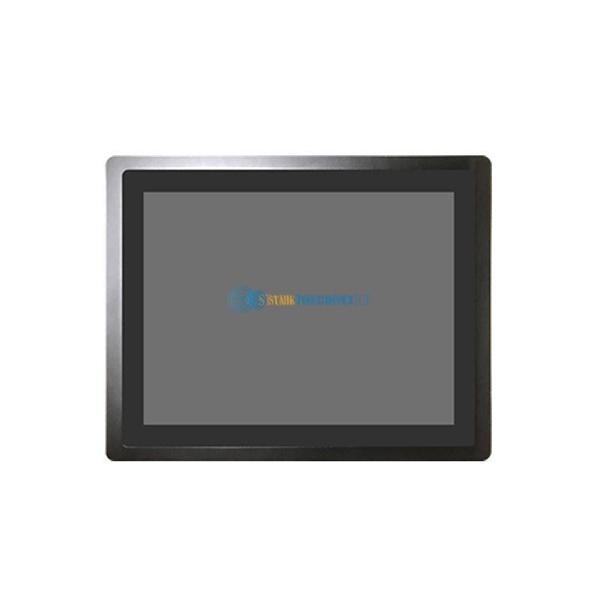Welcome STARK TOUCH DEVICE!
Solutions
Cleaning and maintenance of industrial control computer network interfaces
Cleaning and Maintenance Techniques for Network Interfaces in Industrial Control Computers
Industrial control computers (ICCs) rely on network interfaces—such as Ethernet ports, fiber-optic connectors, or wireless modules—to transmit critical data in manufacturing, automation, and process control environments. Dust, debris, and environmental contaminants can degrade signal quality or cause connectivity failures. Regular cleaning and maintenance ensure reliable communication and prevent costly downtime.

Recognizing Common Network Interface Contaminants
Network interfaces in ICCs face unique environmental challenges that require targeted cleaning approaches.
Types of Contaminants
Dust and Particulate Matter: Fine dust from industrial settings can accumulate inside connectors, disrupting electrical contacts and reducing signal integrity.
Metal Shavings: Machining or welding operations may generate conductive debris that risks short-circuiting pins or damaging optical components.
Oil and Grease: Lubricants or coolants used in nearby machinery can adhere to connectors, trapping dirt and corroding metal contacts over time.
Humidity and Condensation: High-moisture environments may lead to oxidation on copper contacts or moisture ingress in fiber-optic connectors, degrading performance.
Risks of Neglect
Intermittent Connectivity: Dirty or corroded contacts can cause packet loss, latency spikes, or complete link failures.
Signal Degradation: Contaminants on optical connectors may scatter light, reducing transmission quality in fiber networks.
Permanent Damage: Conductive debris or moisture can create electrical shorts, destroying sensitive interface components.
Step-by-Step Cleaning Process for Copper-Based Interfaces
Ethernet and other copper-based network interfaces require careful handling to avoid physical or electrical damage.
Pre-Cleaning Preparation
Power Down and Isolate: Shut off the ICC and disconnect it from the network to prevent accidental data transmission or electrical hazards.
Antistatic Precautions: Use an antistatic wrist strap or mat to avoid electrostatic discharge (ESD), which can damage integrated circuits.
Workspace Setup: Clean a dedicated area free of loose fibers or conductive materials. Lay down antistatic mats for connector placement.
Connector and Port Cleaning
Visual Inspection: Examine RJ45, DB9, or other connectors for bent pins, cracked housings, or foreign objects lodged in the port.
Compressed Air: Use short bursts of canned air (with a moisture filter) to blow dust out of ports and connectors. Hold the nozzle at a 45-degree angle to avoid forcing debris deeper.
Contact Cleaning: Moisten a lint-free swab with isopropyl alcohol (90%+ concentration) and gently rub gold-plated contacts in a single direction. Avoid circular motions that may spread debris.
Drying: Allow contacts to air-dry completely before reconnecting cables.
Cable Inspection and Maintenance
Strain Relief Check: Ensure cables are not bent sharply near connectors, which can stress internal wires and cause breaks.
Shielding Integrity: Inspect braided or foil shielding on shielded cables for fraying or corrosion, which can reduce noise immunity.
Re-termination (If Needed): If connectors show signs of wear, consider re-crimping RJ45 plugs or replacing modular jacks using proper tools.
Cleaning Fiber-Optic Network Interfaces
Fiber-optic connectors demand specialized cleaning to maintain low insertion loss and high return loss.
Understanding Fiber Contamination Risks
Dust and Particles: Even microscopic debris on connector endfaces can cause significant signal attenuation.
Oil and Fingerprints: Skin oils left from handling create a sticky layer that attracts dust and scatters light.
Scratches: Improper cleaning tools (e.g., cotton swabs) may scratch connector surfaces, permanently degrading performance.
Cleaning Tools and Techniques
Dry Cleaning First: Use a reel-based dry cleaner with a soft, lint-free wipe to remove loose debris. Gently insert the wipe into the connector and rotate once.
Wet Cleaning (If Needed): Apply one drop of optical-grade cleaning fluid to a fresh wipe. Re-insert and rotate to dissolve oils. Avoid excess fluid that may wick into the connector.
Inspection with Microscope: Use a fiber inspection microscope to verify the endface is clean. Look for smudges, scratches, or particles.
Handling and Storage Best Practices
Cap Protection: Always replace dust caps immediately after cleaning or disconnecting fibers to prevent contamination.
Avoid Touching Endfaces: Handle connectors by the housing, not the ferrule, to prevent skin oil transfer.
Vertical Storage: Store unused fiber patches vertically to prevent bending and stress on the ferrule.
Post-Cleaning Verification and Troubleshooting
After cleaning, validate network performance and address lingering issues.
Physical Reconnection Checks
Alignment: Ensure cables are fully seated in ports. Listen for a click on RJ45 connectors or verify latch engagement on fiber patches.
Cable Routing: Avoid running cables near motors, transformers, or other EMI sources that could induce noise.
Labeling: Update cable labels to reflect cleaning dates and port assignments for future reference.
Network Performance Testing
Link Status: Use ICC network monitoring tools to confirm the interface shows as “connected” with no errors.
Throughput Tests: Run iPerf or similar tools to measure bandwidth and latency. Compare results to baseline metrics.
Error Counters: Check for CRC errors, collisions, or late collisions in Ethernet interfaces, which may indicate residual contamination.
Advanced Diagnostics
Time-Domain Reflectometry (TDR): For critical fiber links, use a TDR to locate breaks or macrobends caused by improper handling.
Spectral Analysis: In multi-wavelength systems, verify each channel’s power level and signal-to-noise ratio (SNR).
Cross-Talk Checks: Ensure adjacent cables in high-density environments do not induce crosstalk, which can degrade signal quality.
By following these techniques, industrial facilities can maintain the performance and reliability of network interfaces in ICCs, minimizing disruptions and ensuring seamless data flow in automated systems.


